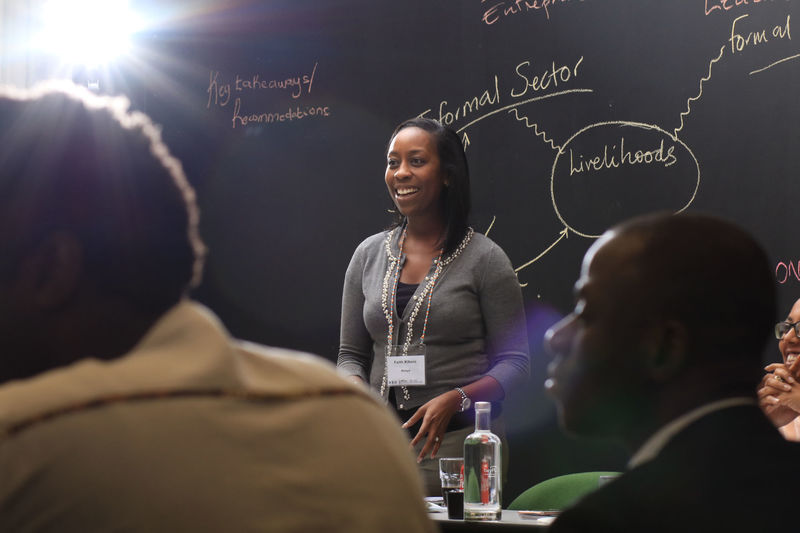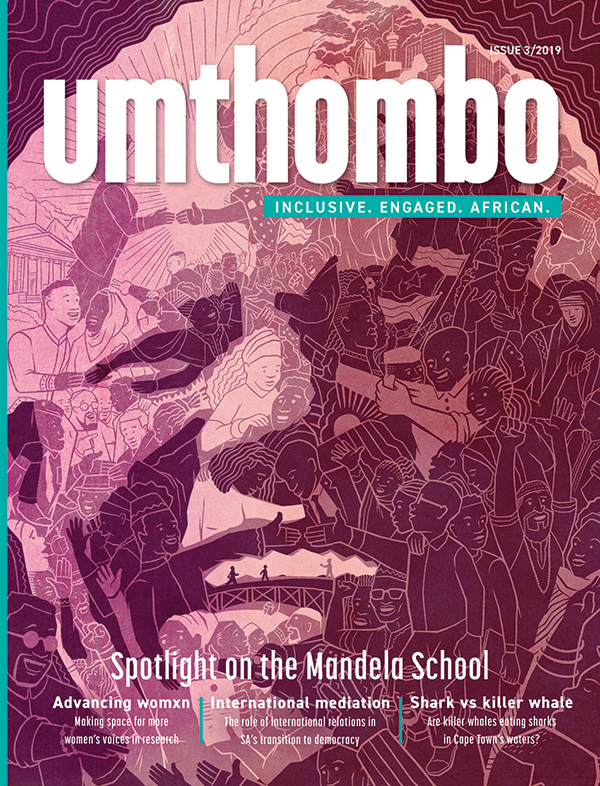Addressing youth (un)employment in Africa
25 June 2019 | Story Ambre Nicolson. Photo Liam Cornell. Read time 5 min.
The Building Bridges Programme at the Nelson Mandela School of Public Governance at the University of Cape Town (UCT) hosted a research roundtable last year on the theme of “Addressing youth (un)employment and livelihoods in Africa”. The two-day roundtable brought together emerging thought-leaders from all over the continent along with representatives from the United Nations Regional Office for East and Southern Africa, the Raymond Ackerman Academy at UCT and Research ICT Africa.
“Building Bridges is the leadership development platform of the Mandela School,” explains Dr Marianne Camerer, programme director for Building Bridges. “It aims to close the gap in analysis and thinking between political actors, civic stakeholders and decision-makers in different sectors.”
“The roundtable was born of the recognition of the importance of livelihoods and inequality in the future of African youth as well as a platform in which graduates of our Emerging African Leaders Programme (EALP) could make their voices and research heard,” explains Mabel Sithole, a UCT doctoral student in political science and the Building Bridges programme officer at the Mandela School. “We wanted to create a space where alumni and experts in the field could discuss and learn from each other.”
“It was so refreshing to find a group of young Africans willing to take on such a daunting and big issue.”
The roundtable invited written submissions around five keys themes that sought to address such questions as what is the role of the informal sector in creating work opportunities, how can we narrow the gap between policy and implementation, and what impact will the fourth industrial revolution have on youth employment in Africa.
EALP graduates presented think pieces that ranged from an exploration of Ethiopia’s industrial parks as a means to address unemployment to the role of the informal sector in addressing work opportunities for Nigerian youth.
Over the course of the two days, key themes emerged. “The roundtable highlighted the recognition that youth leadership can help to bridge the policy-implementation gap, that the informal sector plays an enormous role alleviating poverty and that the role of the private sector is critical,” says Sithole. “The roundtable also explored the impact of the fourth industrial revolution in relation to African youth and observed the importance of protecting freedom of speech on the continent at a time when democracy in Africa is arguably shrinking.”
Faith Kiboro, a 2018 Mandela School research fellow and one of the roundtable organisers, found the discussion about the future of work in Africa particularly relevant.
“It was so refreshing to find a group of young Africans willing to take on such a daunting and big issue,” she says.
Building Bridges alumni
In 2019, the Building Bridges Emerging African Leaders Programme celebrates more than 100 programme graduates of whom 39% were male and 61% were female. Some 43% were from civil society, 31% from the private sector and 19% from the public sector. The remaining 7% came from other sectors.
Alumni of the Emerging African Leaders Programme are from 10 African countries:
- 6 from Uganda
- 7 from Senegal
- 8 from Ethiopia
- 9 from Zimbabwe
- 10 from Ghana
- 11 from Tanzania
- 11 from Zambia
- 11 from Nigeria
- 14 from Kenya
- 17 from South Africa
 This story was published in the third issue of Umthombo, a magazine featuring research stories from across the University of Cape Town.
This story was published in the third issue of Umthombo, a magazine featuring research stories from across the University of Cape Town. Umthombo is the isiXhosa word for a natural spring of water or fountain. The most notable features of a fountain are its natural occurrence and limitlessness. Umthombo as a name positions the University of Cape Town, and this publication in particular, as a non-depletable well of knowledge.
Read the complete third issue online or subscribe and receive new issues in your inbox every few months.
 This work is licensed under a Creative Commons Attribution-NoDerivatives 4.0 International License.
This work is licensed under a Creative Commons Attribution-NoDerivatives 4.0 International License.
Please view the republishing articles page for more information.
Research & innovation





































